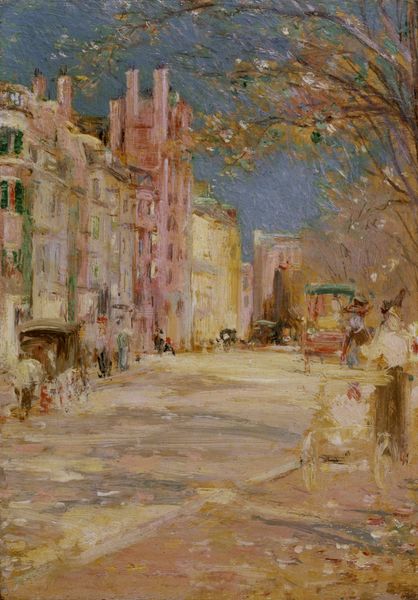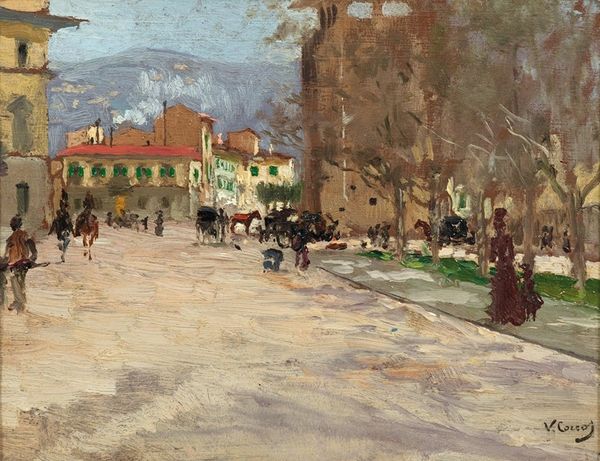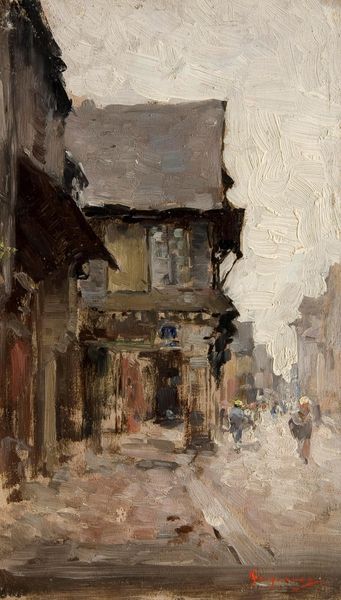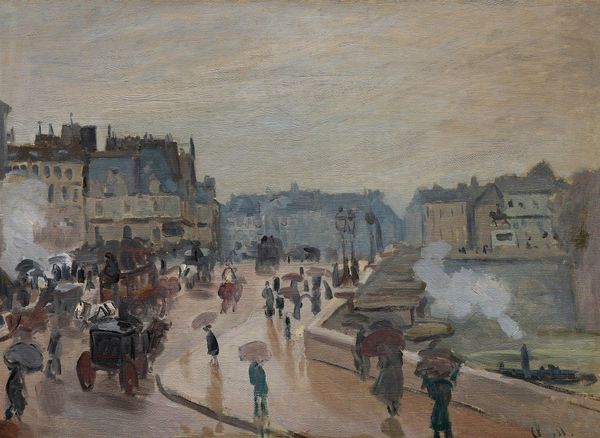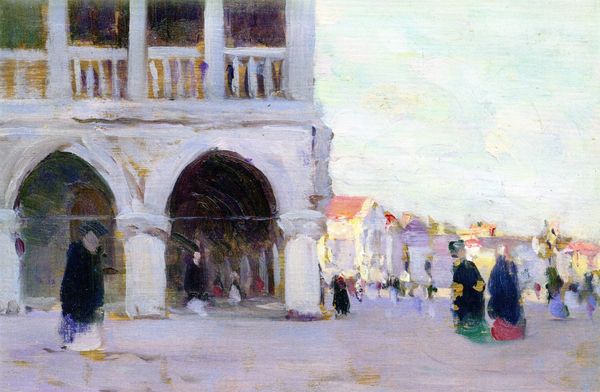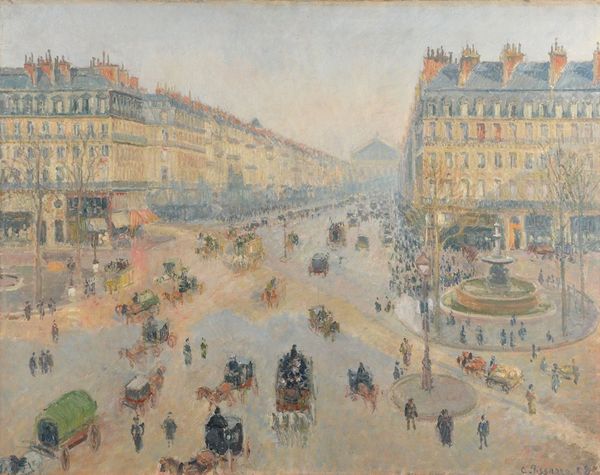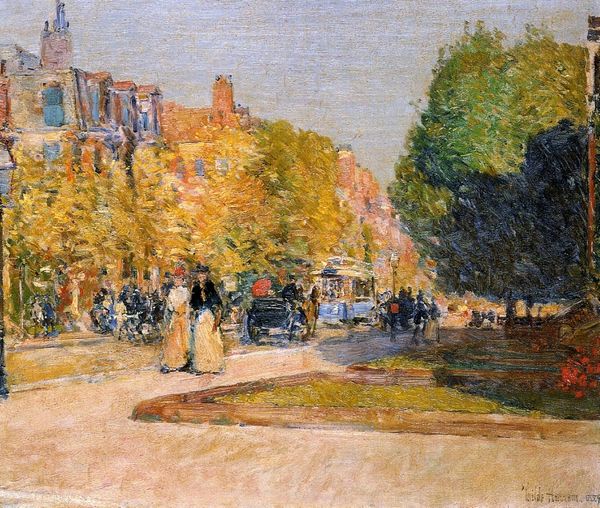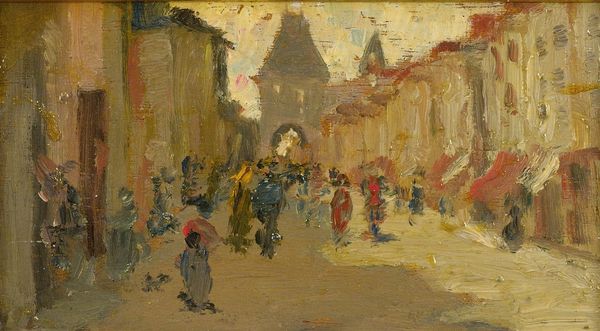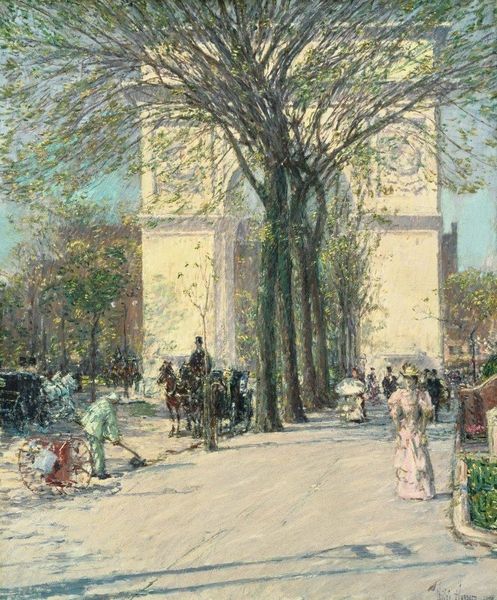
Dimensions: support: 180 x 120 mm
Copyright: © reserved | CC-BY-NC-ND 4.0 DEED, Photo: Tate
Editor: This is Sir Gerald Kelly's "Boulevard Montparnasse," housed in the Tate Collections. It’s a small, unassuming oil sketch, and I’m struck by the muted palette and the feeling of a bustling city scene. What can you tell me about its historical context? Curator: Kelly painted this during a time when Montparnasse was a major center for artistic innovation and social change. How do you see this captured in the painting? Editor: I see the impressionistic style capturing a moment, the energy of the city. It feels modern, but also slightly detached. Curator: Exactly! The loose brushwork and limited color palette create a sense of fleeting observation, mirroring the artist's role as a detached observer of the modern urban landscape. This reflects a shift in artistic focus towards capturing the experience of modern life. Editor: That makes perfect sense. I didn't realize how much the style itself was a commentary on the changing world. Curator: It's a potent example of how art reflects its social and cultural moment.
Comments
tate 8 months ago
⋮
http://www.tate.org.uk/art/artworks/kelly-boulevard-montparnasse-t03650
Join the conversation
Join millions of artists and users on Artera today and experience the ultimate creative platform.
tate 8 months ago
⋮
Kelly moved from London to live in Paris in 1901. He took informal lessons from the Canadian artist James Wilson Morrice, who also lived in Paris. Morrice's advice was that he should paint every day out in the open, making small oil sketches as an exercise. This is one of these sketches, made near his studio, looking along the Boulevard Montparnasse to the café 'La Coupole'. He did not intend them to be studies for a larger work, and kept them in his studio. None of them was seen by the public until his retrospective exhibition at the Royal Academy in 1957. Gallery label, May 1996

